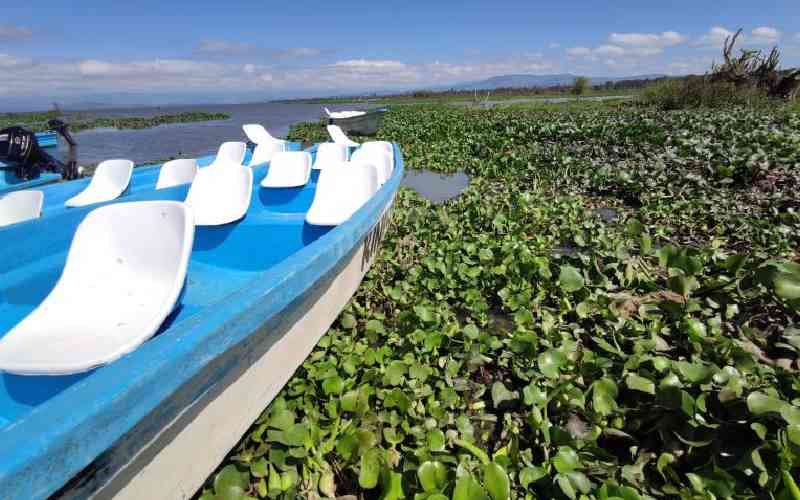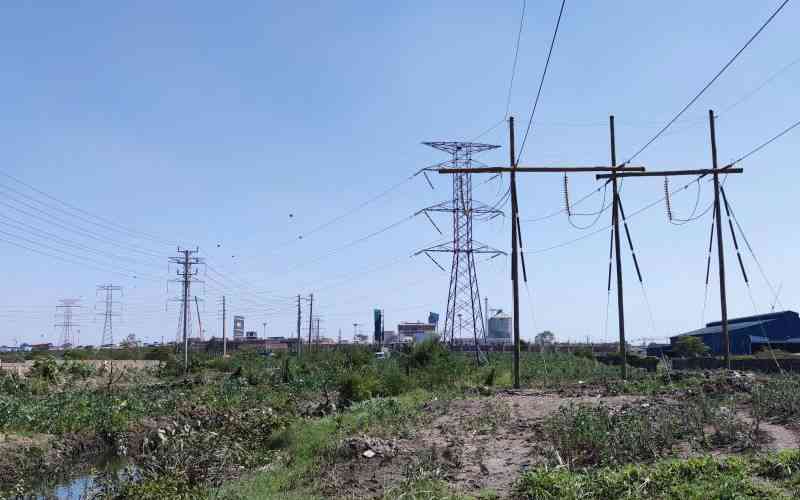By Willis Oketch
Kisumu, Kenya: Residents of Kisumu County especially fishermen will soon forget the hyacinth menace. A research firm intends to generate electricity using the weed as the main raw material.
And in this way, fishermen who have lost business to the weed will no longer have to worry.
The waste management plant will be put up on the shores of Lake Victoria at a cost of Sh100 million.
The plant, expected to generate 120 megawatts of electricity, has a hyacinth-harvesting machine, which is already operational. It can move 360 degrees making it easier to harvest the weed.
The initiative by private investors promises to be the solution to the infamous water hyacinth that has literally chocked the economic potential of Lake Victoria.
The plant’s construction commenced at Rare beach along Kisumu-Bondo road, which is 36 kilometres from the Kisumu International Airport.
Sanjay Vadhera, founder and CEO of Kenya Organic Research Centre for Excellence (Korce), intends to use biodegradable solid waste to contribute 120mw to the national grid as well as produce organic fertiliser.
A 40-acre piece of land has already been purchased for the first phase of the project with plans to acquire more land for expansion since the firm anticipates a rapid growth upon the project’s launch.
The community living around the plant will benefit from free electricity connection to their homes besides working at the plant when operations commence. The water hyacinth harvesting and processing will be a 24-hour task.
Using specially modified harvesters, the weed will be collected and brought to the shore where it will be processed.
Dispel fears
“The plant’s target is at least 150 metric tonnes of the weed in the first few months and increase up to 800 tonnes depending on the strength of machines and personnel,” said Mr Vadhera.
Water hyacinth has covered as much as 680 square kilometres of the lake. If successful, Korce will be the first firm in Kenya and the world to come up with large scale economic use of water hyacinth since 1984, when it was first spotted in River Kagera, which empties its water into the lake.
Vadhera is, however, quick to dispel fears that their plant will want to sustain hyacinth since it’s their major raw material in the initial phase of the waste management plant.
Stay informed. Subscribe to our newsletter
Korce’s long-term plan is to extend their operations to Lake Naivasha and Nairobi Dam, which have also been invaded by the weed.
 The Standard Group Plc is a
multi-media organization with investments in media platforms spanning newspaper
print operations, television, radio broadcasting, digital and online services. The
Standard Group is recognized as a leading multi-media house in Kenya with a key
influence in matters of national and international interest.
The Standard Group Plc is a
multi-media organization with investments in media platforms spanning newspaper
print operations, television, radio broadcasting, digital and online services. The
Standard Group is recognized as a leading multi-media house in Kenya with a key
influence in matters of national and international interest.
 The Standard Group Plc is a
multi-media organization with investments in media platforms spanning newspaper
print operations, television, radio broadcasting, digital and online services. The
Standard Group is recognized as a leading multi-media house in Kenya with a key
influence in matters of national and international interest.
The Standard Group Plc is a
multi-media organization with investments in media platforms spanning newspaper
print operations, television, radio broadcasting, digital and online services. The
Standard Group is recognized as a leading multi-media house in Kenya with a key
influence in matters of national and international interest.








